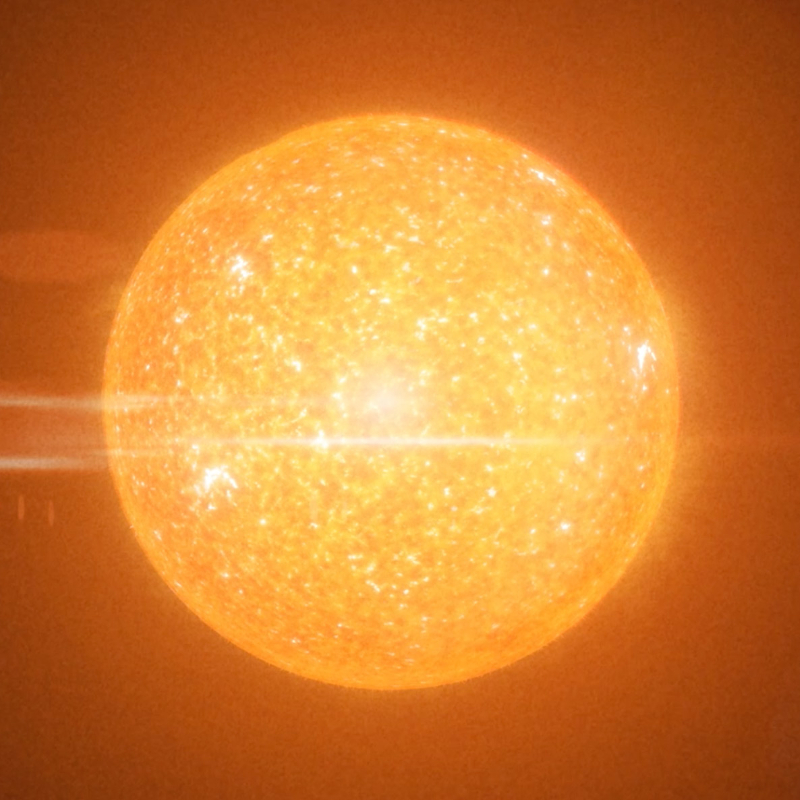What Are Celestial Objects?
Celestial objects are a broad classification of any natural object in space. This could be as small as a piece of dust or as large as a galaxy. Some of the more common and important ones to know are planets, asteroids, comets, stars, galaxies, and moons. These are the most common ones to hear about and are some of the ones that will be elaborated upon down below.
Planets
Planets are likely the most common type of celestial objects you will hear about in your life, besides of course the sun and moon, but those are exceptions. While there are eight planets in our solar system (sorry Pluto), there are countless planets around the universe. Any planet that doesn't fall within our solar system, i.e. planets that are not Mercury, Venus, Earth, Mars, Jupiter, Saturn, Uranus, or Neptune, are called exoplanets. These planets are invisible to the naked eye and can't be directly viewed with telescopes. This means that these planets require us to view them through data rather than through our eyes. Space organizations like NASA utilize several methods to understand and locate exoplanets, which can be found at this link. Unfortunately, with our current technology it is near impossible to directly view the surface of an exoplanet, even with our most advanced telescopes.

Asteroids
Asteroids are bodies in the inner solar system that are smaller than planets. The vast majority of asteroids in our solar system are located within the asteroid belt or in more minor belts in between planetary orbits. While some are resource rich and have lots of metals that are rare on Earth, most asteroids are composed of ice or other rocks that aren't all too valuable. This has created an asteroid mining industry that will likely take off in the near future to mine and return rare metals to Earth from these asteroids. While they can hit Earth and cause catastrophic damage, the vast majority of asteroids are too small to even hit the Earth's surface and the ones that are large enough to cause damage are well tracked and do not pose an immediate threat. To counter any potential threats, NASA has recently tested its DART spacecraft to deflect them. This mission was a success and saw the orbit of an asteroid changed. Although the change was slight, at a large enough distance even a very small change in an asteroid's speed could cause it to no longer be a threat to Earth.

Comets
A comet is similar to an asteroid, but it has a few key differences. A comet has a much more elliptical orbit, with most having orbits that see them pass by the sun and voyage out past Neptune; comets are larger than most asteroids, with asteroids being on average 10 meters across and comets being 10 kilometers across; and most comets also have a distinct tail that will stretch behind it as it gets closer to the sun, as the ice and other particles warm up and melt. Comets have a few pieces to their anatomy that make them more complex than asteroids, those being the nucleus (the solid part of the comet), the coma (a side effect of getting close to the sun and having particles melt and stay within the gravitational bounds of the comet), and two tails: the dust tail and the ion tail. The dust tail is made up of the same material the coma is, that being melted particles, and the ion tail is formed from the sun pushing electrons off the comet from ultraviolet radiation.

Stars
Stars are one of the most notable celestial objects that we can see with our naked eyes. They fill the sky in non-urban areas with minimal light pollution. They are typically formed over a long period of time consisting of dust particles, usually from a supernova, condensing into a massive object. Once it hits a certain point, it will begin a reaction in its core to form helium. Due to the heat at the core of the star, it will cause hydrogen atoms to bond, forming helium. The helium will then push out to the surface of the star, helping to keep the star from collapsing into itself. Once a star no longer has enough material left to keep fusing hydrogen and helium, it will collapse, as its fusion pushing out is no longer stronger than the gravity pulling into itself. If a star is massive enough, it will turn into a black hole once it collapses. If it isn't massive enough to form a black hole, it will turn into a white dwarf, being a fraction of its prior size but still having the same mass. If the star was large enough before it collapsed it would explode in a supernova. These explosions are extremely powerful and are visible for millions of years after the star collapsed. Some supernovae are so powerful that they are able to be seen from Earth with the naked eye, and if the star is close enough and large enough, it can outshine the full moon at night and be visible during the day.

Galaxies
Galaxies are the largest objects in space, and consist of billions of stars and planets. Galaxies are centered around supermassive black holes, which hold the whole galaxy together and prevent all the objects within its bounds from flying away into space. Galaxies take on many shapes, one of the most common being spiral galaxies, which look exactly the way they sound. The most famous galaxy is of course the Milky Way Galaxy, which is where Earth and our solar system resides. The next closest galaxy to us is the Andromeda Galaxy, which is 2.5 million light years away from us. It is expected that the Milky Way and Andromeda will collide in the future, forming Milkdromeda. However, this collision will happen 6 billion years from now, there is no direct threat to us as a species for the immediate future.


